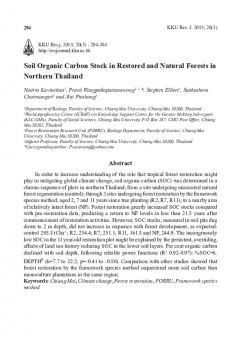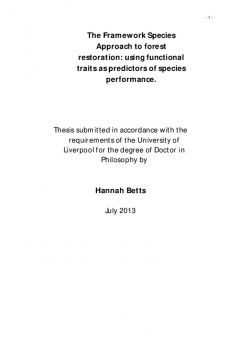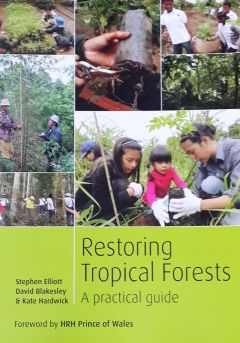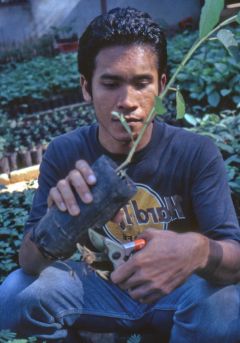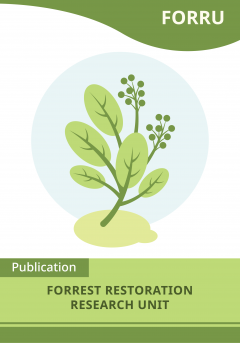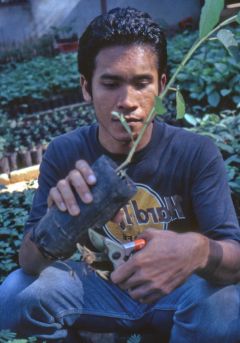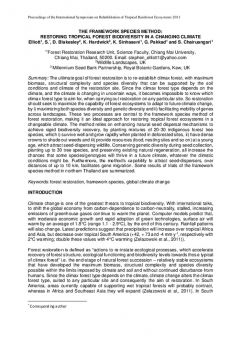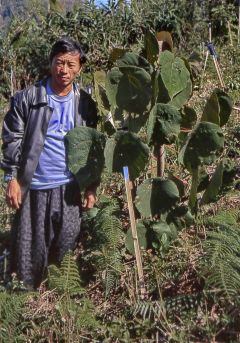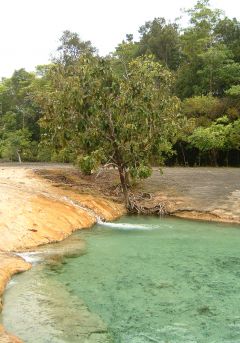The Nan Project, directed by Assist. Prof. Dr. Dia Shannon comprises 3 research initiatives:
-
From a Bare Mountain to a Regenerated Forest: compared landscape planting designs for forest restoration in Nan Province, sponsored by the National Science and Technology Development Agency (NSTDA), 2017 to 2020.
-
Forest Landscape Restoration and Community Well-being: supported by the Program Management Unit on Area Based Development (PMU A), 2020 to 2021.
-
Evaluating Changes and Ecosystem Services of Nan Restored Forests: funded by the National Science and Technology Development Agency (NSTDA), 2021 to 2022.
The research spans three districts of Nan Province—Pua, Phu Phiang and Wiang Sa—with three plots in each district. The project commenced with a survey of reference forest remnants, near the restoration sites, including i) the Nam Kaen - Nam Sa Watershed Forests (Phu Phiang District), supervised by the Royal Forest Department; ii) Mon Hin Kaew Community Forest (Pua District) and iii) Ban Muang Noeng Community Forest (Wiang Sa District). The survey involved documenting tree density, species diversity and phenology, as well as bird diversity, over three years. Such data were then compared with the same in restoration forests, established in the 3 districts.
Knowledge of the framework species method of forest ecosystem restoration was transferred to local communities and restoration plots of various sizes were planted with a range of indigenous framework tree species. Post-restoration activities include frequent weeding and fertilizer application, as well as the cutting of firebreaks in the dry season. Monitoring focused on survival and growth rates of each species, as well as the diversity of soil microbial communities. Ecosystem services, provided by the restored forests, including climate control, were evaluated, along with forest products used by local people. The effects of restoration on the quality of life of local people was also assessed. Currently, villagers who are project members continue to actively contribute to the care of the restored forest, to ensure its long-term health and growth.
In collaboration with:
Biodiversity
Biodiversity recovery is one of the main aims of forest restoration - but what to measure? Plants? Birds? Mammal? Learn simple monitoring techniques here.
41: Soil organic carbon stock in restored and natural forests in Northern Thailand
Abstract: In order to increase understanding of the role that tropical forest restoration might play in mitigating global climate change, soil organic carbon (SOC) was determined in a...
42: Bird diversity on Doi Mae Salong, Mae Fa District, Chiang Rai Province
ABSTRACT: A study of bird species diversity at Doi Mae Sa Long, Ma Fah Luang District, Chiang Rai Province, was carried out from May 2010 to April 2011. The study area consisted of 30 plots, set...
43: The Framework Species Approach to Forest Restoration: Using Functional Traits as Predictors of Species Performance.
Abstract: Due to forest degradation and loss, the use of ecological restoration techniques has become of particular interest in recent years. One such method is the Framework Species Approach...
44: Restoring Tropical Forests: a Practical Guide
Available in English, Spanish and French The authors at a publishers' meeting, Kew 2012Restoring Tropical Forests is a hands-on guide to restoring degraded tropical forest ecosystems. Based...
45: Reproductive Ecology and Propagation of Fig Trees (Ficus spp.) as Framework Trees for Forest Restoration
ABSTRACT: Fig trees (Ficus spp.) have been promoted as framework species for tropical forest restoration, because they are considered to be keystone species. This study investigated the...
46: Research towards refining framework forestry.
FORRU has conducted extensive research to refine the FSM. FORRU staff periodically enters the target forest area to collect data on the fruiting and flowering of different tree species....
47: The phenology of dioecious Ficus spp. tree species and its importance for forest restoration projects
ABSTRACT: Ficus spp. are keystone tree species in tropical forest ecosystems and therefore, it is vital to include them in tree planting for forest restoration programs. However, lack of knowledge...
48: The Framework Species Method: Restoring tropical forest biodiversity in a changing climate
ABSTRACT: The ultimate goal of forest restoration is to re-establish climax forest, with maximum biomass, structural complexity and species diversity that can be supported by the soil conditions...
49: Fallow to forest: Applying indigenous and scientific knowledge of swidden cultivation to tropical forest restoration
Rotational swidden cultivation systems, with fallow periods long enough for the regeneration of secondary forests are capable of maintaining forest cover and plant diversity in a dynamic balance...
50: Vascular flora of the Emerald Pool area, Krabi Province, southern Thailand
ABSTRACT: The Emerald Pool is situated in remnant lowland (25-75 m), seasonal, fresh-water, swamp forest on limestone bedrock. Primary, evergreen, seasonal, hardwood forest, often with bamboo and...


